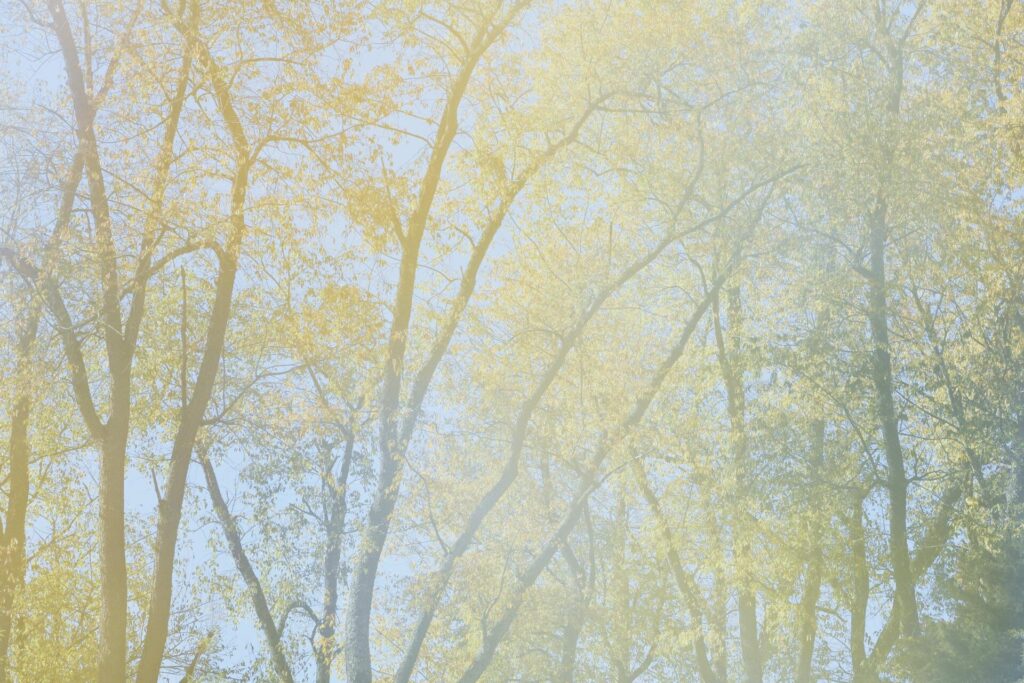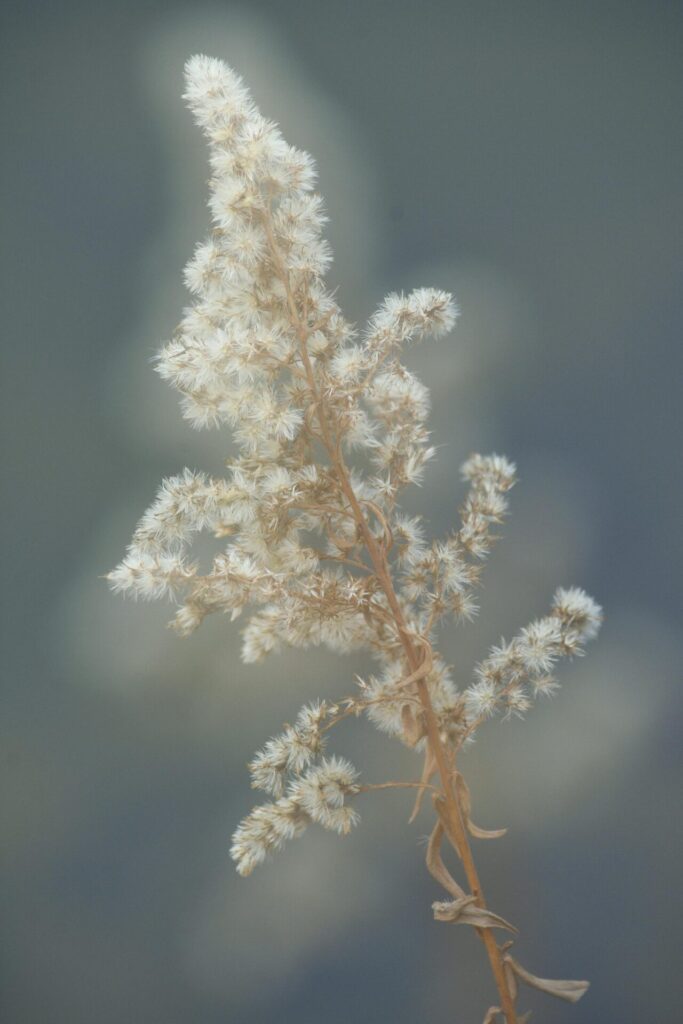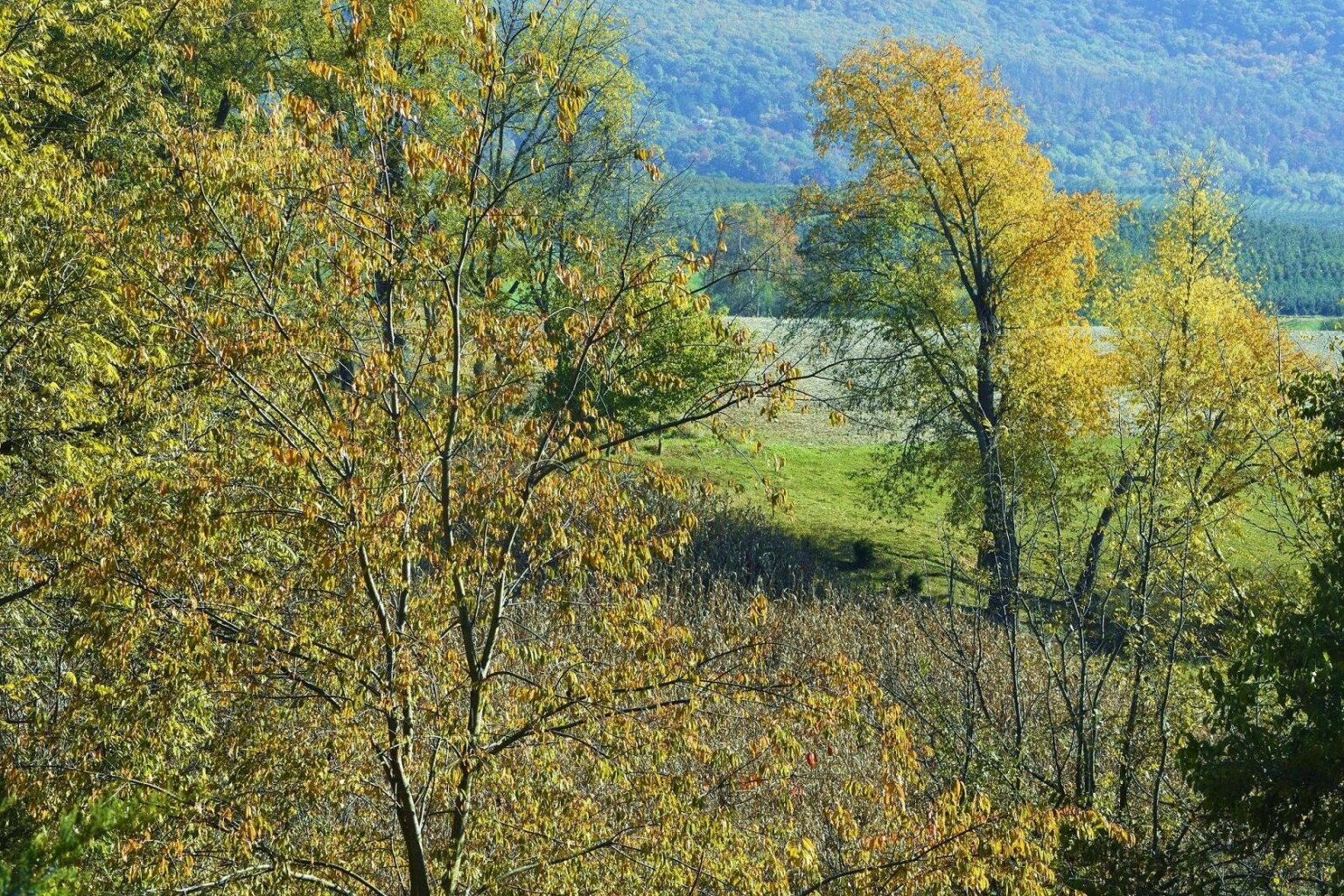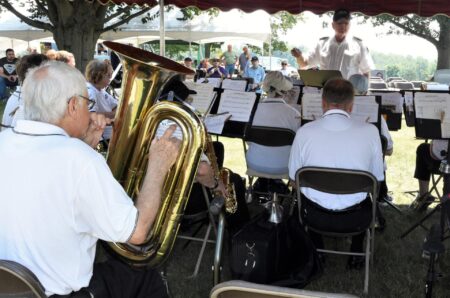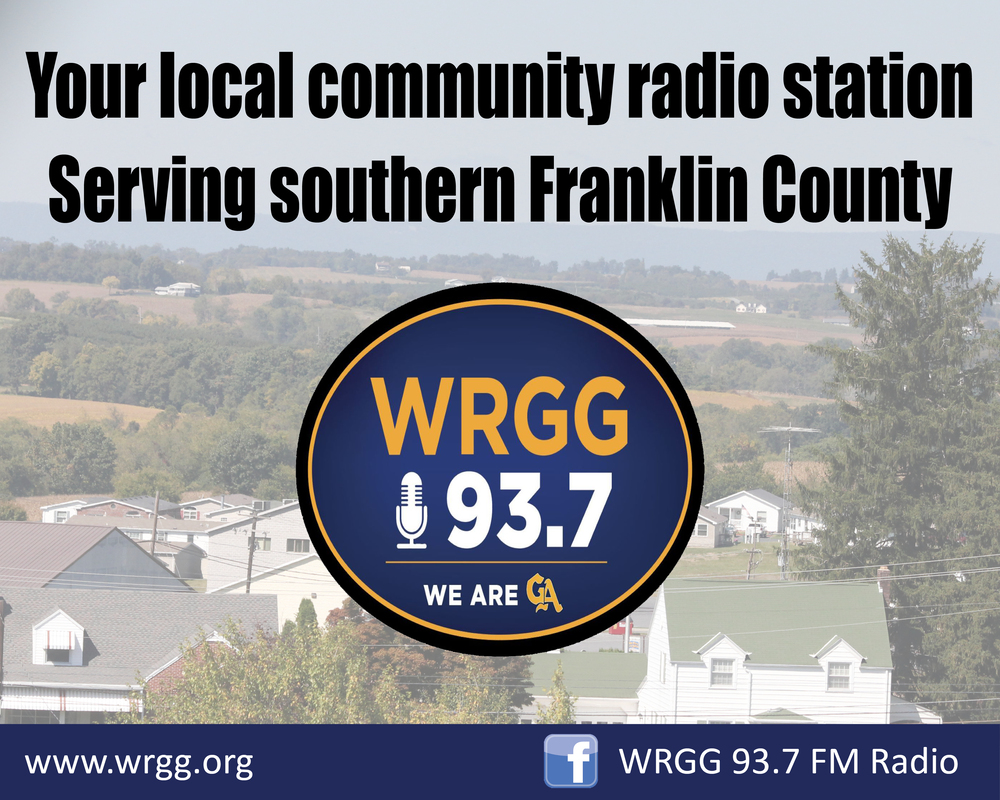In southern Pennsylvania’s Cumberland Valley, scenic landscapes are a constant feast for the eyes. But only rare places exude an exceptional quality that instantly captures a naturalist’s heart. The Institute’s Washington Township property is such a place. This 40-acre parcel impresses as the organization’s new headquarters. Here, with so many natural features inspiring the senses, it’s an idyllic locale for The Institute’s pursuit of science-based education and conservation programs.
The Institute was founded in 1990, and its sole purpose has been encouraging stewardship of the region’s natural and cultural worlds. The group manifests these objectives through their environmental and cultural history programs for elementary and secondary school children. The Institute also conducts local research, and provides adult learning opportunities by hosting events and other creative agendas.

Red Run establishes a northern boundary at The Institute’s new home. The creek bubbles with chilled water carried fresh from the nearby mountains. Gentle trickling from its constant flow immediately calms a congested mind. Autumn hues from overhead trees tint the water’s surface, with saturated rocks decorating the creek bed.
The Institute monitors this stream’s hydrology as they research and document the Antietam watershed here- and at 28 other locations. Visiting school children will enjoy a unique opportunity to learn about local and regional waterways.
A picturesque lane leads into the property, guiding a curious eye toward a lovely natural setting. A rocky hill guards the entry’s left side. Then, a reflective pond comes into view. Mirror images of shoreline tree trunks trace lines on the liquid surface like an impressionist painting. Mallards and Canada geese glide across sun-dappled water, acting neighborly.
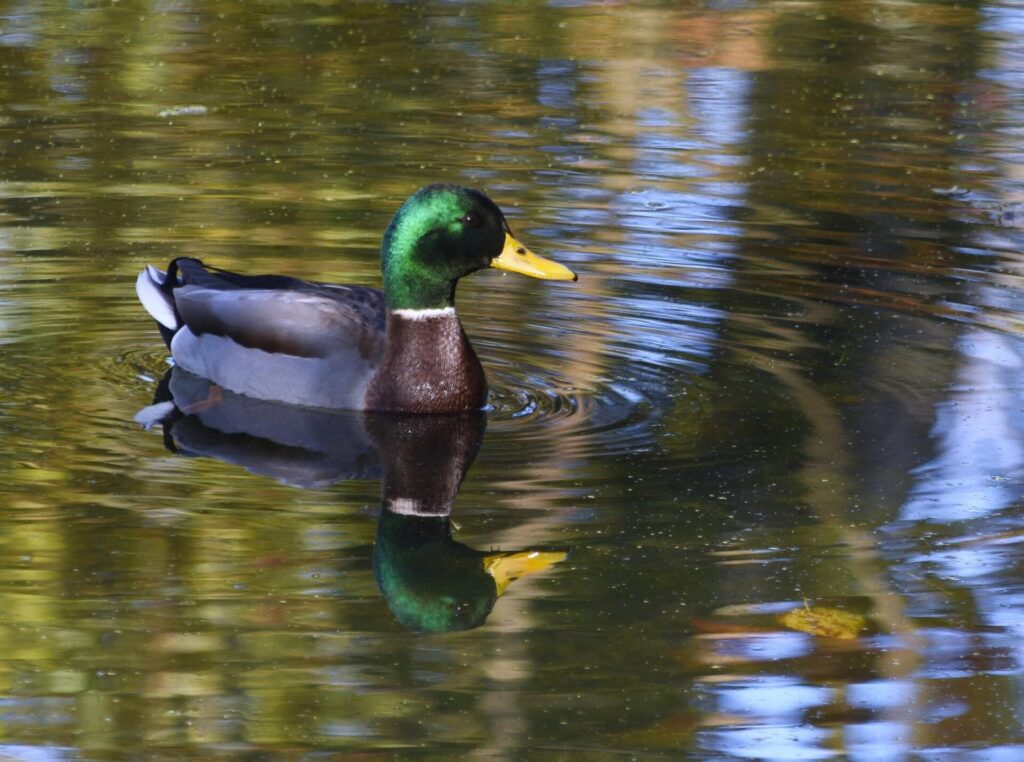
The Institute’s pond will be restored to its optimum natural condition after a comprehensive design study is completed. It currently suffers from bank erosion and a north wall breach. Ponds are some of nature’s most diverse freshwater bodies. They offer wildlife safe homes and proper nourishment, and also provide local water purification and flood control.
Restoration of this one-acre pond will bring it back not only to an aesthetic wild wonder, but also as a functioning educational tool. Adjacent to this pond, a small wetland offers opportunities for scientific study too.
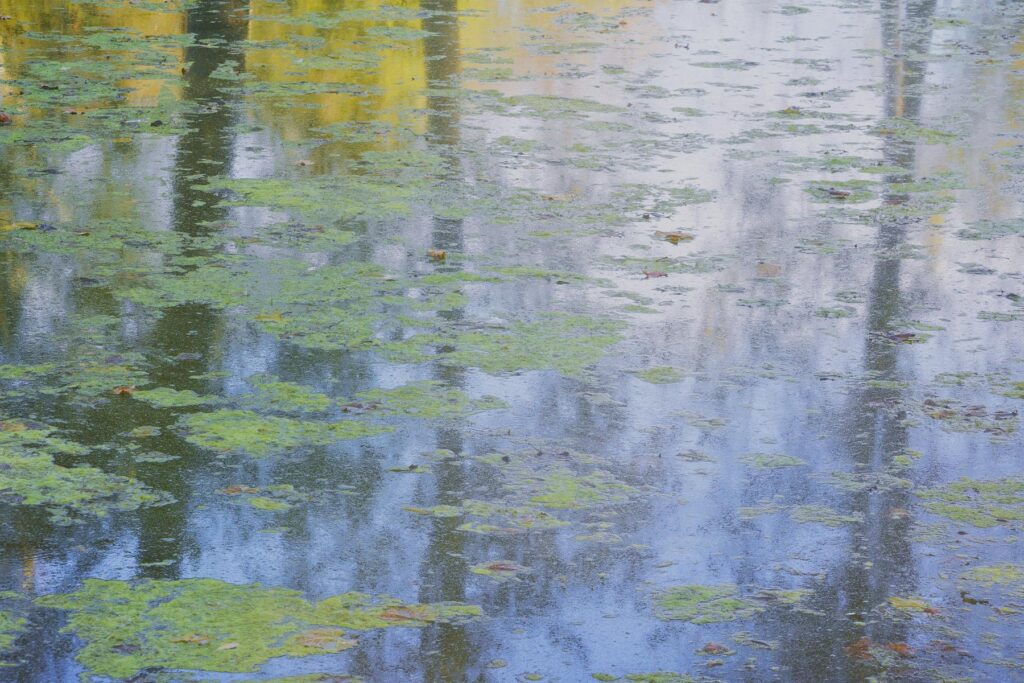
These watery biomes are wildlife havens. Turtles and frogs are abundant here. Kingfishers squeal fast-paced, nervous chirps while zooming overhead. A great blue heron emits a prehistoric squawk when it takes flight, extending a seven-foot wingspan. Bald Eagles have also been seen here, once an endangered national symbol, now a thriving species. The Institute’s land is a bird-watching paradise.
Prior owners established trails throughout the property, offering a head-start for exploration of its rolling meadows and shaded woodlands. The Institute will expand this maze, creating a trail network that complements its educational mission, and fulfills its future promise to provide full public access to their enchanting landscape.
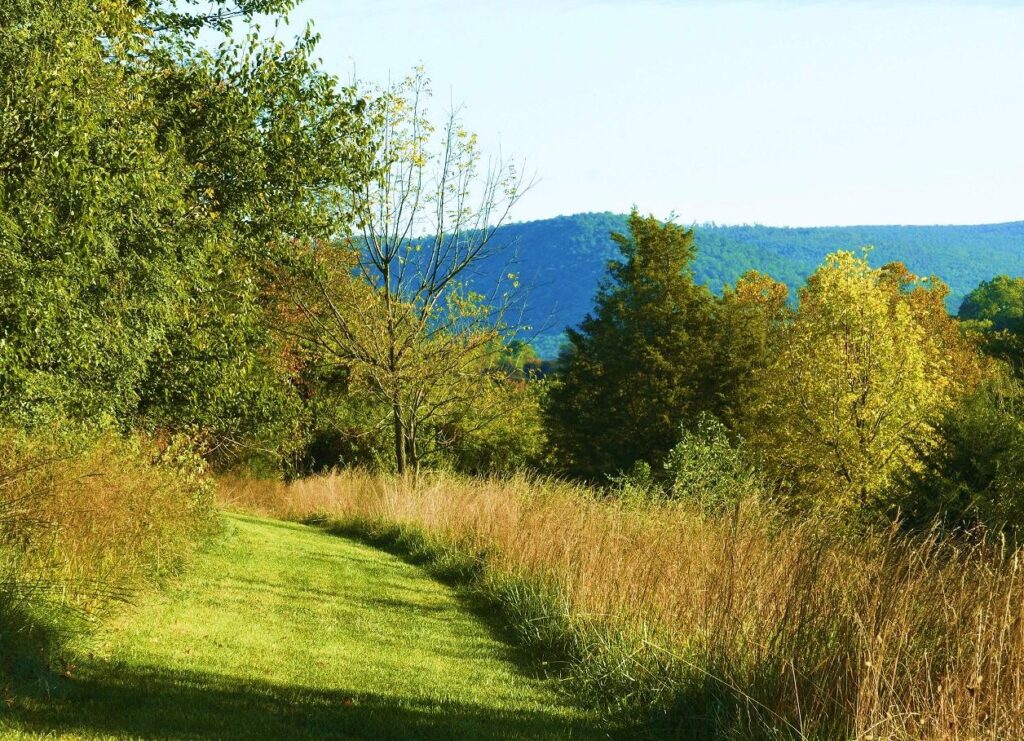
On a walk down these inviting trails, impressive tree species are on display. Sycamores thrive near the creek, their ghostly white bark glows in sunlight. Red Cedar and Black Walnut mix with other giant hardwoods. In meadows, grasses turn golden and seasonal flowering flora offer their last showy blooms.
Yellow and orange leaf hues dominate this landscape in autumn, a striking sign that nature prepares for dormancy until spring. Fallen leaves offer a damp, earthy scent; a byproduct of nature’s recycling. On the forest floor, logs are hosts for bracket fungus. The trace of a finger reveals the velvety texture of green moss growing on giant boulders.
Mimicking the surrounding ridge and valley countryside, The Institute’s property has undulating hills that offer grand vistas from high ground. Mount Quirauk rises above the fields when looking east, the highest point in the South Mountain ridgeline. This panoramic view gives visitors a vivid sense of place and greater appreciation for the ancient Appalachians and surrounding fertile farmland.
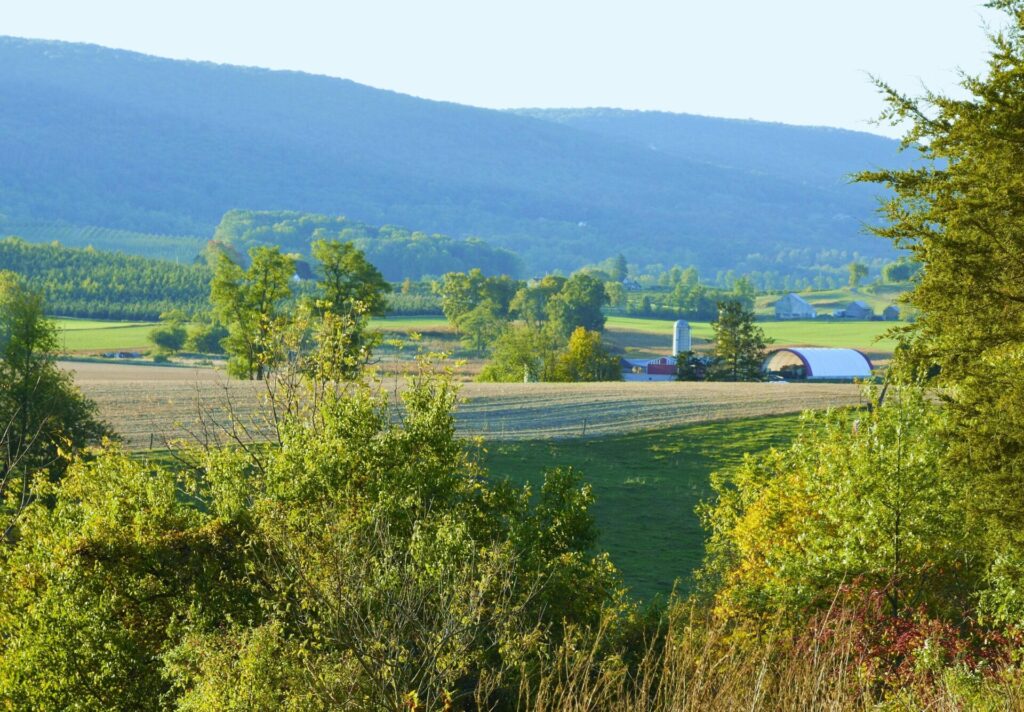
Gazing west and north, fields are sprinkled with grazing deer. Other wildlife spotted on the property includes industrious raccoons and elusive red foxes. No matter which direction viewed, the high vistas here continuously amaze as weather conditions change with corresponding qualities of light.
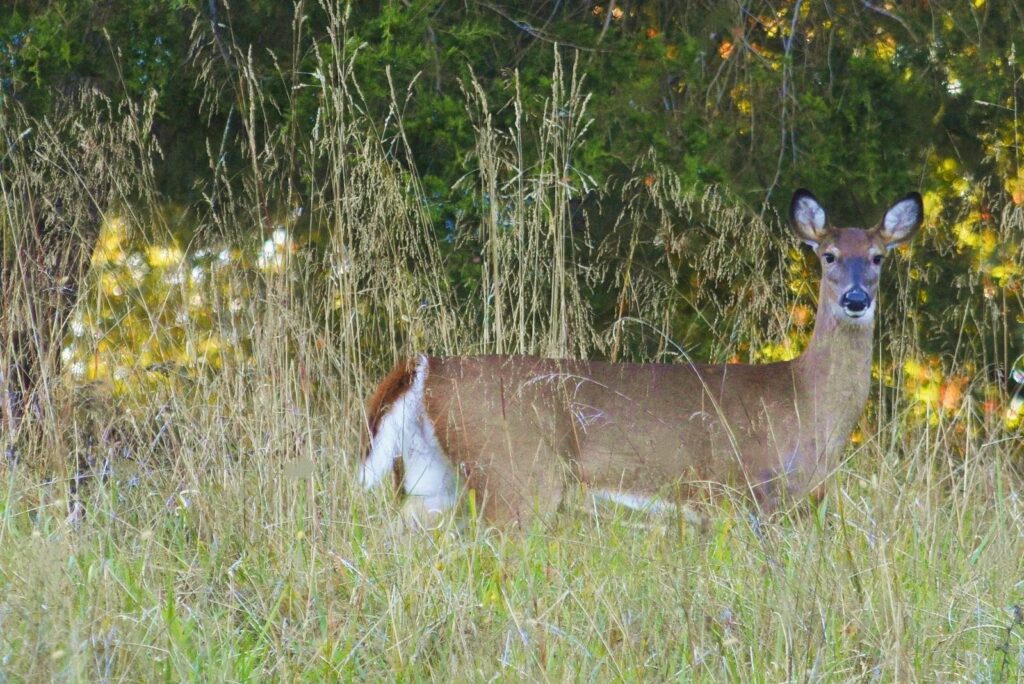
A rustic barn and autumn cornfield tie this property into an agrarian landscape alongside its neighbors. In nearby fields, cows roam. This resident barn was initially considered a potential home for The Institute’s planned Nature Center, but the cost to convert the early-1900s structure was prohibitive. Instead, this agricultural relic will be respectfully dismantled.
Selected architectural components from the barn will be incorporated into a new structure that can be constructed and operated with desired environmental and energy sustainability features. Past stories will be interpreted, along with natural history, within the planned Nature Center Education Building.
A charming, 70s-era home commands the property’s highest spot and was modified to an administrative office. The setting is serene and evokes a rural retreat. Eventually, the Nature Center will be added on to this structure. The Institute has a Capital Campaign underway to raise funds for this project and other various property improvements. They hope to ensure future success of their environmental efforts by continuously sowing seeds of stewardship.

A modern bridge will be built in 2024 as the first major capital project. At present, The Institute’s property is not open to the public, but educational events are already being held here
(as well at other local parks) for local school groups. After completion of this bridge and other necessary improvements, this park-like setting will be shared with the community.
When Thoreau found his Eden at Walden Pond, he said: “Heaven is under our feet as well as over our heads”. With their fortunate discovery and wise land purchase, The Institute found its own slice of heaven for a new home. As they stride forward with ambitious plans, a future of community education will be conducted at an immersive living classroom that truly inspires.
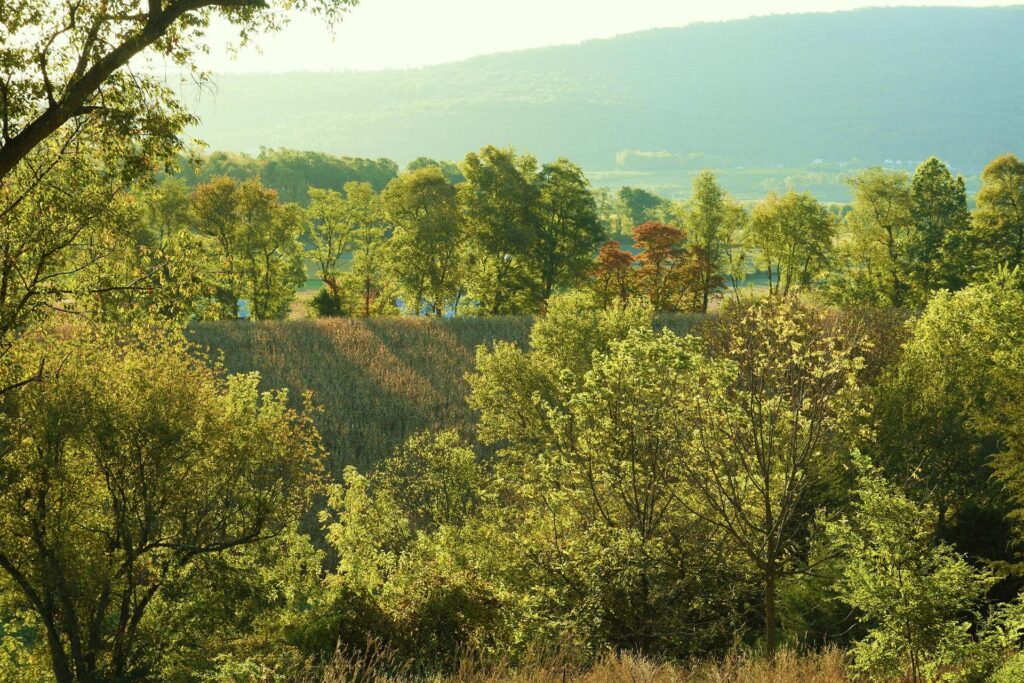
For more information about The Institute’s programs, or to join or donate to the organization, visit them online: www.natureandcultureinstitute.org or call: 717-762-0373. Upcoming events include a Winter Solstice Celebration, with star-gazing opportunities, on December 21st from 5 to 7pm at Red Run Park.
